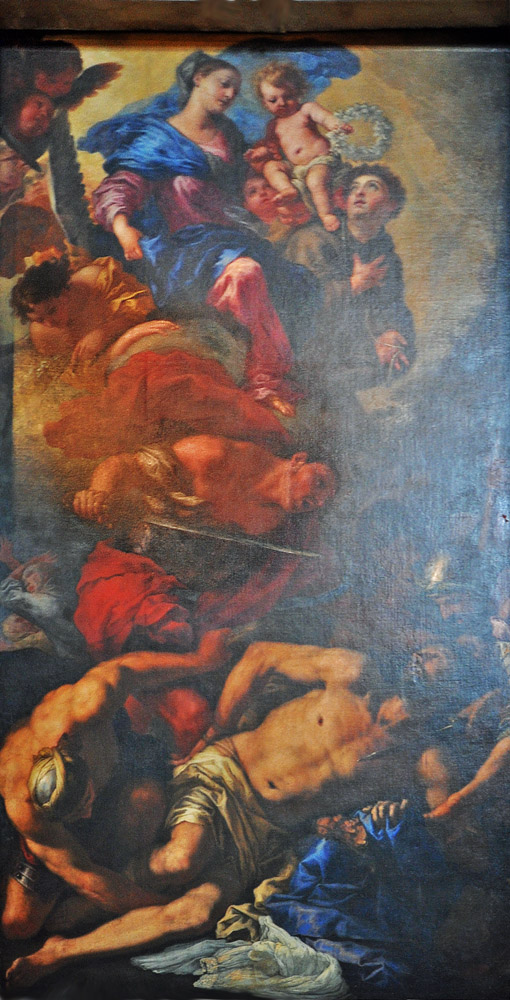
Antonio Zanchi
The So-Called Martyrdom of St. Anthony
17th century
Oil on canvas
Church of Santa Maria del Giglio, Venice
The painting's title, given on a label provided by the church, seems to assume that the martyr pictured is a "St. Anthony." He cannot be either of the two well-known Anthonys, of Padua and Egypt, for neither of them was a martyr. One possibility is that he is Anthony of Antioch, who died during the persecutions of Diocletian in 302. But that Anthony was first blinded with hooks and then put to the sword in the arena with his companions, not dismembered as we see in this painting.1
A second possibility is that our martyr is St. Pelagius. In his
passio
A passio is an account of the tortures and death of a Christian martyr
he refuses the advances of the Saracen king of Córdoba, who then orders him cut to pieces and thrown into the river. A mob of soldiers then descends on him and savagely executes the king's command.2 In this
Spanish image of his dismemberment one hand has already been removed and a soldier is cutting off his arm, just as in the Zanchi painting. It is true that the Pelagius of the passio is a child of 13, whereas the martyr in our painting has a beard, but considering that Zanchi's painting has the savage mob, the severed hand, and the sword cutting into the shoulder, Pelagius seems much more likely to be the martyr that the artist had in mind.
If the name "Anthony" does not apply to the martyr, then it must refer to the young Franciscan in the upper half of the painting, who is surely Anthony of Padua because the Christ Child is on his shoulder. This saint became a Franciscan in hopes of imitating the martyrs of that order who had been killed in Morocco. Even though illness prevented him from going there with a second Franciscan mission, he was known thereafter for his zeal for martyrdom.3
Across the nave from the Zanchi is
another painting
of the same size and shape that also has St. Anthony in Heaven observing a martrydom. The label in the church identifies it as "Carlo Loth, The Virgin and Child with St. Anthony and the Martyrdom of St. Eugene." It was made a century after the Zanchi painting, but seems to have been modeled on it, with angry reds dominating a martyrdom scene crowded with secondary figures, and the martyr's body similarly placed in the lower half in a brightly lit quadrilateral. The two paintings thus celebrate not only the pictured martyrs but a zeal for martyrdom that drove St. Anthony in all his labors for Christ.
View this image in full resolution.
Read more about images of St. Anthony of Antioch, St. Anthony of Padua, and St. Pelagius.
Photographed at the church by Richard Stracke, shared under Attribution-NonCommercial-ShareAlike license.